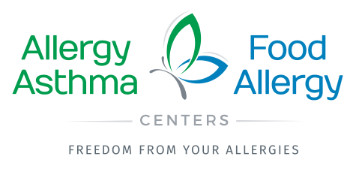We diagnose and treat a variety of conditions, including:
Allergic contact dermatitis is a form of contact dermatitis that is due to an allergic response following contact with a substance. This is different from irritant contact dermatitis that can be caused simply by contact with harsh chemicals. Allergic contact dermatitis is a hypersensitivity reaction that affects only a part of the population. The symptoms are similar to irritant contact dermatitis and typically include red, itchy skin, and sometimes involves blister formation on the skin. They rash of allergic contact dermatitis typically occurs two or more days after contact with the substance that is responsible for the allergy.
Common causes of allergic contact dermatitis include plant oils (poison ivy), metals (nickel) and personal care products such as chemicals found in soaps, shampoos and lotions.
The cause of allergic contact dermatitis can be found by patch testing. We perform patch testing to 80 of the most common causes of allergic contact dermatitis in North America. Once identified, we can provide you with a list of products that are safe for you to use. We utilize the Contact Allergen Management Program from the American Contact Dermatitis Society.
Allergic rhinitis is a collection of symptoms, mostly in the nose and eyes, which occur when you breathe in something you are allergic to, such as dust, dander, insect venom, or pollen.
Anaphylaxis is a severe, rapidly progressing, life-threatening allergic reaction to an allergen such as a food, drug, or insect sting.
Asthma is a chronic disease involving the airways in the lungs. These airways, or bronchial tubes, allow air to come in and out of the lungs. If you have asthma your airways are always inflamed. They become even more swollen and the muscles around the airways can tighten when something triggers your symptoms. This makes it difficult for air to move in and out of the lungs, causing symptoms such as coughing, wheezing, shortness of breath and/or chest tightness.
Atopic dermatitis (eczema) is a chronic skin condition related to immune dysfunction in the layers of the skin. It usually begins in infancy or early childhood. It is often associated with asthma, allergic rhinitis (hay fever) or food allergy. This progressive sequence is called the atopic march.
While it can sometimes be difficult to pinpoint the problem that’s triggering your chronic cough, the most common causes are tobacco use, postnasal drip, asthma and acid reflux
Chronic sinusitis is one of the more prevalent chronic illnesses in the United States, affecting persons of all age groups. It is an inflammatory process that involves the paranasal sinuses and persists for 12 weeks or longer.
Drug allergies are a group of symptoms caused by an allergic reaction to a drug (medication).
Eosinophilic esophagitis is an allergic inflammatory condition of the esophagus. Symptoms are swallowing difficulty, food impaction, and heartburn.
A food allergy occurs when your immune system responds defensively to a specific food protein that is not harmful to the body.
Hives, also known as urticaria, affect about 20 percent of people at some time during their lives. It usually starts as an itchy patch of skin that turns into swollen red welts. The itching may be mild to severe. Although hives can be triggered by foods or medications, over 90 percent are “idiopathic” (no specific cause) and occur unrelated to a food, medication or environmental exposure. Most hives are not caused by stress alone, but stress can worsen hives, and uncontrolled hives can be a great source of stress, as well as reason to miss work, school or leisure activities.
There are few tests that her helpful to diagnose the cause of hives, but there are many ways to treat hives. Most can be treated with antihistamine medications. In severe cases, more potent medications can be used, including immunosuppressive medications and Xolair (FDA approved treatment for chronic idiopathic urticaria). These medications are highly effective in treating hives.
Nasal polyps are growths on the lining of the sinuses and nasal passages. Nasal polyps can develop when the mucus membranes of the nasal passages are inflamed. Some of these growths can be large enough to block the nasal passages. Unlike colon polyps, nasal polyps do not turn into cancer, but they can create discomfort due to sinus infections and loss of the ability to smell and taste. Sometimes nasal polyps can be associated with the development of asthma.
Common symptoms of nasal polyps include:
- Nasal blockage
- Loss or decreased sense of smell and taste
- Runny nose with clear or colored mucus
- Headache and sinus pressure
Nasal polyps can be diagnosed in the office by examining the nasal passage with a fiberoptic rhinoscope.
Non-allergic rhinitis is a medical term that for an overly sensitive nose. Symptoms include nasal congestion and post nasal drainage that are not due to a specific allergy. The symptoms are typically year round and do not respond to oral antihistamines such as Benadryl, Allegra, Zyrtec, and Claritin.
Primary immunodeficiencies (ex. CVID, IgA deficiency, selective antibody deficiency) are disorders in which part of the body’s immune system is missing or does not function properly.
Recurrent infections, especially sinus and ear infections, are often secondary to poorly controlled allergies, but immune deficiency and anatomic problems can also be an underlying cause.
When most people are stung by an insect, the site develops redness, swelling and itching. However, some people are actually allergic to insect stings. This means that their immune systems overreact to the venom.
